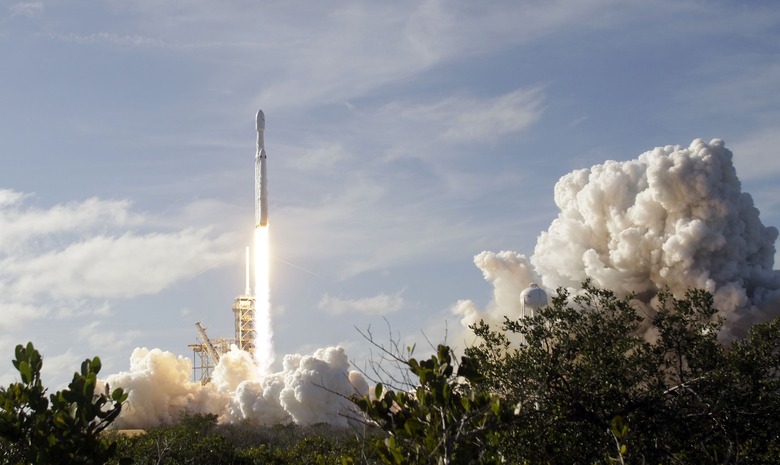Watch Live As SpaceX Launches Another 60 Tiny Satellites Into Orbit
- SpaceX is sending another 60 Starlink satellites into orbit today, and you can watch it live.
- The Starlink mission will be flown on a Falcon 9 rocket that has already traveled to space three times.
- Starlink satellites have been a headache for astronomers, but SpaceX has shown no signs of slowing its deployment of the Starlink grid.
- Visit BGR's homepage for more stories.
The coronavirus pandemic has derailed a lot of plans and affected just about every industry you can imagine, but SpaceX has done a remarkably stellar job of staying on schedule with its various launch dates. Today marks the fourth time the company will send a batch of Starlink satellites into orbit, and you can watch it live right here.
The launch, which is currently scheduled for 3:37 p.m. EDT will take place from Florida's Cape Canaveral. As has been typical of many Starlink launches, there will be 60 of the tiny satellites aboard the SpaceX Falcon 9 when it heads skyward. That's a whole bunch of satellites, and many astronomers aren't particularly crazy about it.
The live stream for the mission will begin shortly before the launch is scheduled to take place. You can watch it live via the YouTube window embedded below.
This will be the fourth time that this particular Falcon 9 has flown, having previously launched the Crew Dragon's unmanned trip to the International Space Station, a RADARSAT Constellation mission, and a previous Starlink mission before arriving on the launchpad once again today. The fairing being used for today's flight is also a used (sorry, "flight-proven") component and previously flew during the AMOS-17 mission.
As with all SpaceX live streams, we'll be treated to some nice shots of the rocket heading to space, on-board camera views once the spacecraft leaves the ground, and commentary from SpaceX staff to add context to what we're seeing.
Should the mission have to be postponed for any reason, a secondary launch opportunity is slated for Thursday at 3:15 p.m. EDT. The most common reason for a SpaceX launch delay is the weather. High-level winds have to cooperate for the launch to take place, and we've seen launches delayed multiple times due to poor conditions.
The Starlink missions are one of SpaceX's pet projects, sending hundreds (and eventually thousands) of tiny communications satellites into orbit in order to develop a worldwide data network. Once it's up and running it could prove to be a very big deal not just for SpaceX but for organizations and even everyday people, but the huge number of satellites required for the grid to work is already giving astronomers a big headache.
Scientists using ground-based telescopes have complained about the satellites interfering with their observations, and SpaceX has pledged to do whatever it can to mitigate these unfortunate side effects. One proposed solution included painting the satellites with a flat black coating to minimizes reflections, though it's unclear if the Starlink hardware being launched today is any different than the satellites astronomers dread.
